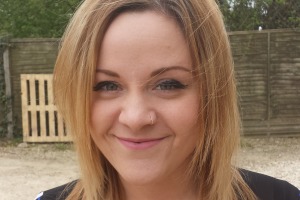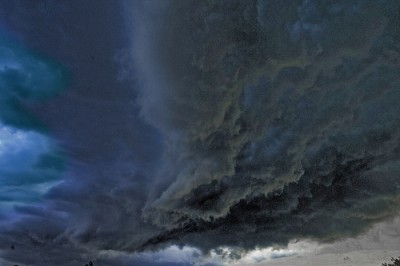Article recently published by Event Magazine profiling Hannah Wood.
Hannah Wood, connectivity, supplier and site manager at Etherlive, shared her career story with Event for the Women in Events campaign. She talked about working in a diverse role, how she ended up working for an event technology company and how a quad bike featured in one of her past interviews.
What do you do and how long have you been in your current role?
I have been at Etherlive for a year, following my role at an experiential marketing agency. At Etherlive I am in charge of ordering and managing the installation and maintenance of all of our internet connectivity and telephony services; account managing our major suppliers including connectivity, recruitment, vehicles and equipment hire; and I will also be taking on management responsibility for our pool of freelance site managers and managing some event sites myself.
This is the most diverse role I have worked in and I am lucky enough to be involved in many areas of the business, from the ordering process to the financial reconciliation to the implementation of our technology services on-site at events.
Where was your first job? What was the most important thing you learnt there?
In 2009 I moved to London and began working for the Royal Society of Medicine as an assistant conference co-ordinator and quickly moved up to being the external societies co-ordinator, responsible for all conferences and meetings for a particular society. This was a venue-based role and included dealing with all departments of the society to plan and manage the events as well as close contact with the client and conference delegates.
I learnt a lot here about dealing with many different types of people and how to deal with pressurised situations where there are multiple stakeholders.

Event’s latest Women in Events profile with Etherlive’s Hannah Wood
How did you get from there to where you are now?
Over the next three years I worked at Imperial College London in the role of events co-ordinator for the university’s commercial services department, as an events manager at an agency providing the catering, bars and theming for weddings and corporate events and at an experiential marketing agency managing a promotional staffing team at events across the UK.
In each role I honed my skills and I got to attend events including V Festival, Rockness, Moto GP, Festival No. 6, Lounge on the Farm, Brownstock and many more. This, together with my experience at university where I made sure I improved my knowledge working in events at the student union, gave me a solid foundation for the future.
Looking back, did you expect your career path to take the course it has?
No, I originally thought I would go in the direction of conferences and work with specific exhibitors and clients on stands and contents rather than working on the organisation and management of full-scale events. I also never thought I would end up working for a technology company but I’m glad I do, it has given me even more insight to the workings of events and my previous experience on the non-tech side helps when working with other contractors and clients.
Would you do anything differently?
I would have invested my time in a lot more work experience. The events industry can be difficult to get into if you want to make a career out of it and any experience you have is highly valuable. It’s taken me a long time (and a few not so nice jobs) to get where I am today.
Who has inspired you along the way?
I take inspiration from anyone I can learn from. I work with a number of people who have been in the industry for a long time or who have worked in really interesting areas and I don’t think there’s ever a day when I don’t get taught something new, whether it’s new event knowledge or a bit more information about some sort of technology we use.
Have you ever had a job interview that went particularly well or spectacularly wrong?
I don’t think I’ve ever had an interview that sticks out as being fantastic or awful, but I have had some interesting ones. I ran a bar at a farm show as part of one of my interviews, which was great fun, and I got to drive a quad bike on another interview.
Is there a piece of career advice you’ve ever been told that has stuck with you?
You will never know everything. Don’t think that you do or you might end up looking very silly.
What career advice would you give to your 21-year-old self?
Change your university course, this one isn’t going to take you anywhere you can’t already go.
How do you wind down and relax after a hectic day?
I go to kick-boxing training.
Article published from Republished from http://www.eventmagazine.co.uk/People/article/1303744/how-i-hannah-wood/







